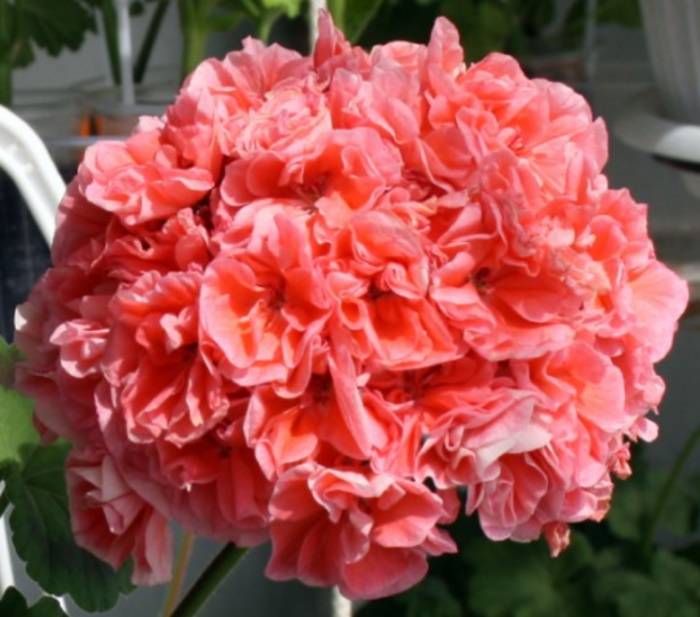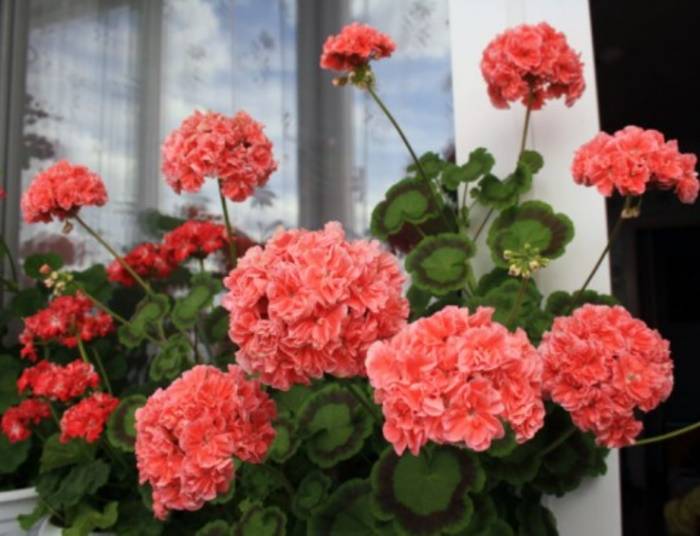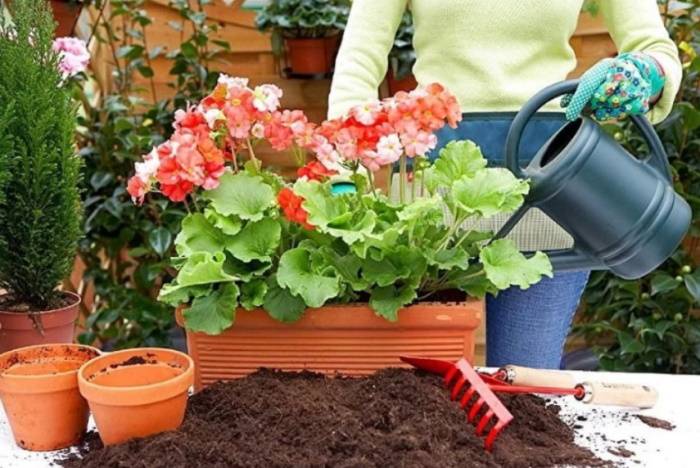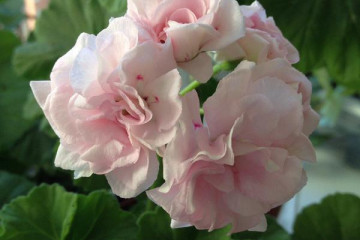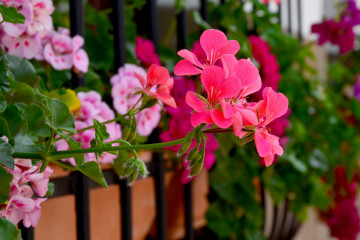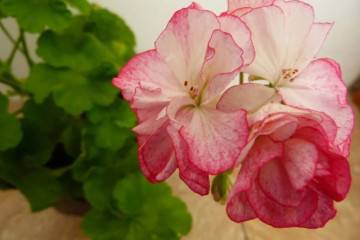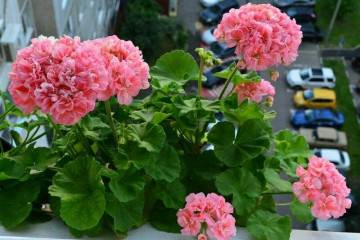Pelargonium Lake - characteristics of the variety and cultivation
Content:
Zonal pelargonium has always been very popular among lovers of indoor ornamental plants. It is unpretentious in care and breeding, moreover, it pleases with flowering almost all year round.
Description of the Lake Pelargonium variety and its characteristics
Pelargonium Lake is small in size, very similar to geranium. In fact, she belongs to the Pelargonium genus, which is part of the Geraniev family. Pelargonium Like has beautiful carved leaves of a rounded shape of dark green color with a green-brown wide edging.
Terry bright pink, milky white, orange, scarlet, peach flowers at the edges acquire a lighter shade. Small inflorescences are collected in a large, dense, amazingly beautiful, ball.
Planting and transplanting pelargonium Lake
Pelargonium Lake does not like dense plantings. When planting it in open ground, do not forget about the long roots, the distance between the bushes should be 20-30 cm, the holes are dug to a depth of 20 cm. Planting in the soil is done in June, when the soil is no longer exposed to frost.
On the windowsills in the apartment, it is planted in medium-sized pots with a diameter of 15-20 cm. It is better that it was a ceramic pot, it is able to protect the roots of the plant from high temperatures. In the absence of ceramic pots, you can plant in plastic, but more carefully monitor the drying out of the soil.
Pelargonium prefers light, loose soil with a high content of sand and peat. Lack of nutrients in the soil can slow down the development of the plant, its flowering. A drainage layer is necessarily poured into the bottom of the pot. Pelargonium Lake loves sunny areas, but partial shade is still preferable for her. It is desirable that the air temperature does not exceed 20-22 ° C, then the flowering will be more abundant.
Further care
Caring for pelargonium is not difficult even for an inexperienced florist. It consists in timely, moderate watering and loosening of the soil. Drying out of the soil or stagnation of excess water should not be allowed. Over-watering can lead to root rot. The variety does not need to spray the leaves, additional humidification of the air.
The pelargonium independently grows with one stem. To give a beautiful bush shape, pruning should be done. Then several new shoots will grow from each stem at once, and the plant will acquire a beautiful shape.
With the onset of cool days in the fall, the pots with plants are transferred to a cooler place. The lack of lighting is made up with fluorescent lamps, extending the daylight hours to 10-12 hours. The air temperature should not exceed 20 ° C.
How the plant reproduces
Propagated by Luke Pelargonium cuttings and seeds. The seeds can be purchased at flower shops.They are planted in trays with prepared soil mixture, lightly sprinkled with earth, moistened and covered with glass or film. When the first shoots appear, the shelter is removed.
Reproduction by planting seeds in the ground is a longer and more laborious process, it is better to choose a propagation method by cuttings. With a sharp knife, the top with three leaves is cut off from the stem at a right angle. Cuttings are placed in water or planted directly in the ground.
Growing problems and pests
The main pests of pelargonium are the root worm, which spoils the roots of the plant, and the whitefly, which likes to settle on the inside of the leaves. Excessive soil moisture contributes to the appearance of the root worm. To combat it, insecticides are used. But in the case of damage to the root system, it is better to say goodbye to the flower, and transplant the cut tops of the plant into new soil.
When creating suitable conditions for a perennial flower, it will delight for a long time with its unique color. The main thing is not to overdo it with watering.
